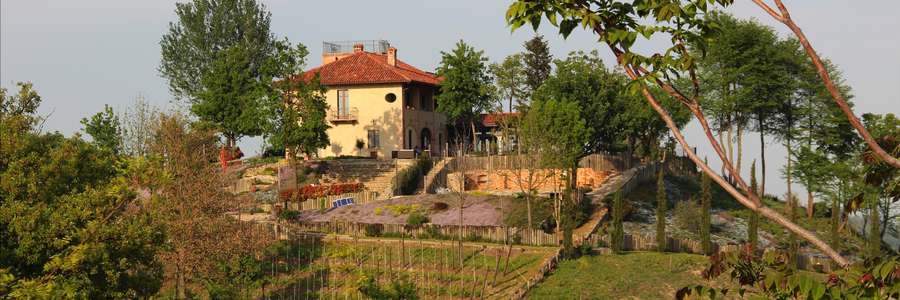
Liguria and Piedmont
Liguria and Piemonte shared several experiences during the history. There were many situations that put in contact these two regions. Here we analyze some topics that interest both the Regions and we start with the Celtic theme that we've already analyzed in the page: Local history.
The Celtic influence in the language
As we've already seen for Liguria, also in the history of Piedmont the infiltration of the Celtic population implied a strong impact on culture, customs and traditions. The linguistic influences on the Piedmontese dialect were remarkable. It is curious to observe how some words passed from the Celtic to the Piedmontese without almost undergoing any change. Some of the words that remained identical from celtic to the current dialect are: bric (mountain or hill), rat (mouse) ciabot (small woodland house), patan (naked) and barba (uncle).
Le Sciasceline
Another link that involved both the regions is agriculture. The olive harvest, a centuries-old Ligurian activity, became increasingly known in the south Piedmont. Before the introduction of the nets, the olives fallen on the ground were picked by the girls, one by one, after the olive beating work made by the men. 'Sciasceline' was the name given to the women who partecipated to the olive harvest, because the first workers involved to cooperate with the Ligurian families came from Sassello, a little village in northmost side of Savova. From then (and until a few decades ago) girls coming from all over the south Piedmont reached Liguria in the harvest season.
La Bagna Cauda
Agriculture and cuisine are strictly connected. What about Bagna Cauda, one of the most known Piedmontese dish? As we have already seen for the topics above, also in this case the border between the two Regions was crossed: the result, once again, was excellent! The sea of Nice and the Ligurian countryside provided anchovies and extra virgin olive oil. Thanks to these ingredients, Piedmontese people gave birth to that delicious dish that still appears in our day on the menus of Piedmontese trattorias and some Liguria inns.
Curious and Cunning Tricks Against Saracen Attacks
One more thing: if you have taken a look at the two pages of our website Villages of Imperia and Villages of Savona you probably noticed how many villages of Riviera have, as points of interest, structures like sighting towers and fortifications. The reason is simple: for several centuries, Ligurian population had to deal with the attacks of their troublemakers par excellence: the Saracen pirates. Our ancestors studied lot of traps to defend the territory: sighting towers, boiling oil for those who tried to climb the forts walls and fake bonfires to give the impression that the villages had already been besieged.
At this point, we cannot omit an expedient adopted by the Piedmontese solders of the Pamparato town's tower. In fact, they too had to struggle and strive a lot to get rid of Saracens. Here, we summarize a nice and funny story taken from the book 'Storie Piemontesi' wrote by Alessandro Dutto. After consecutive months of siege, resources and foods within the walls fortess were running out and the Pamparato population were raving with hunger. It was a critical situation. To discourage the aggressors, the Piedmontese performed a little and cunning show: one man appeared on the wall fortress walking with some cushions hidden under the dress. His intention was to appear like a very fat man that had not sufferred hunger during the siege.
To complete the show he took the last piece of bread soaked in wine and then he thrown it on the encampment of the aggressors: He wanted to prove that they had so much food that they could also waste it. At the end, the man released a thundering burp in the direction of the Saracen camp as a sign of complete food satiety. It was at that point that the aggressors, exhausted of life in the camp and even more discouraged by the quantity of food that the Piedmontese seemed to have, decided to backtrack. And so, they went to visit the Ligurians. Saracens, what a troublemaker they were!
Back